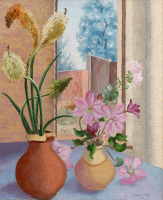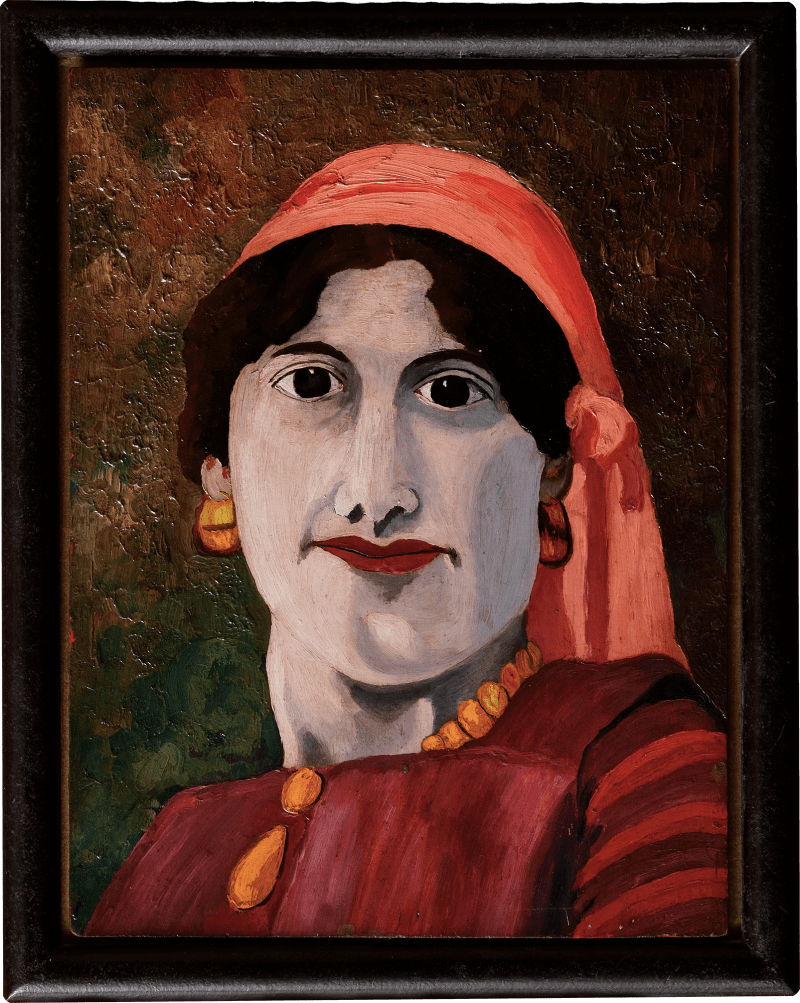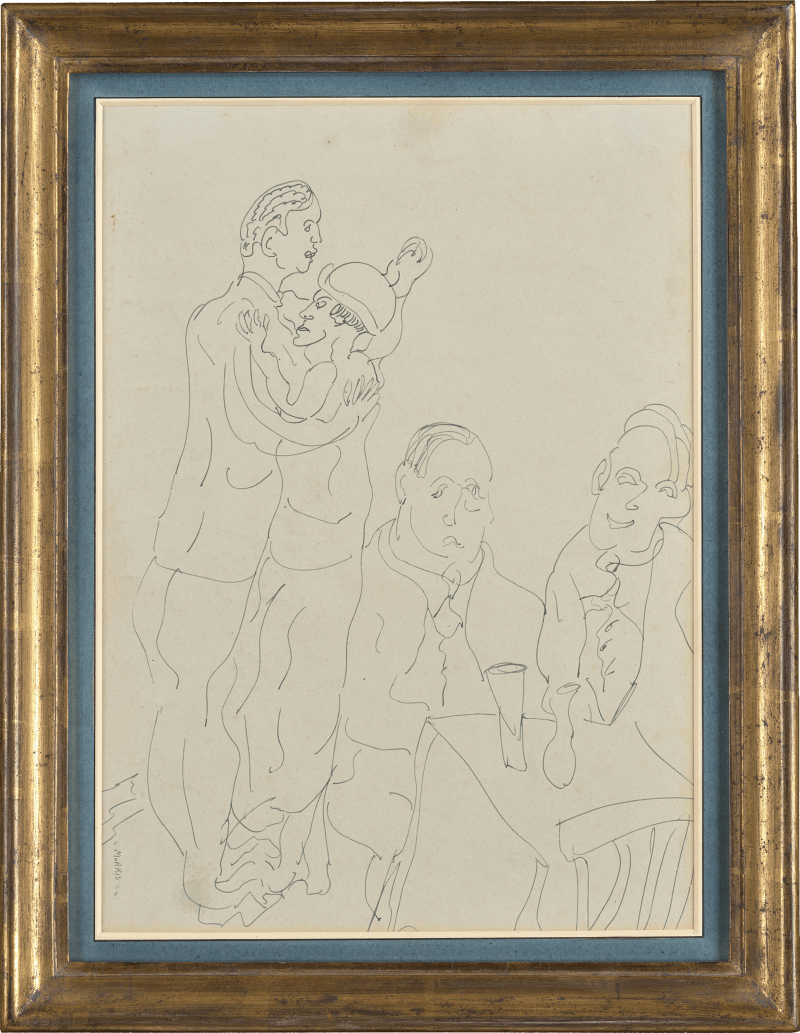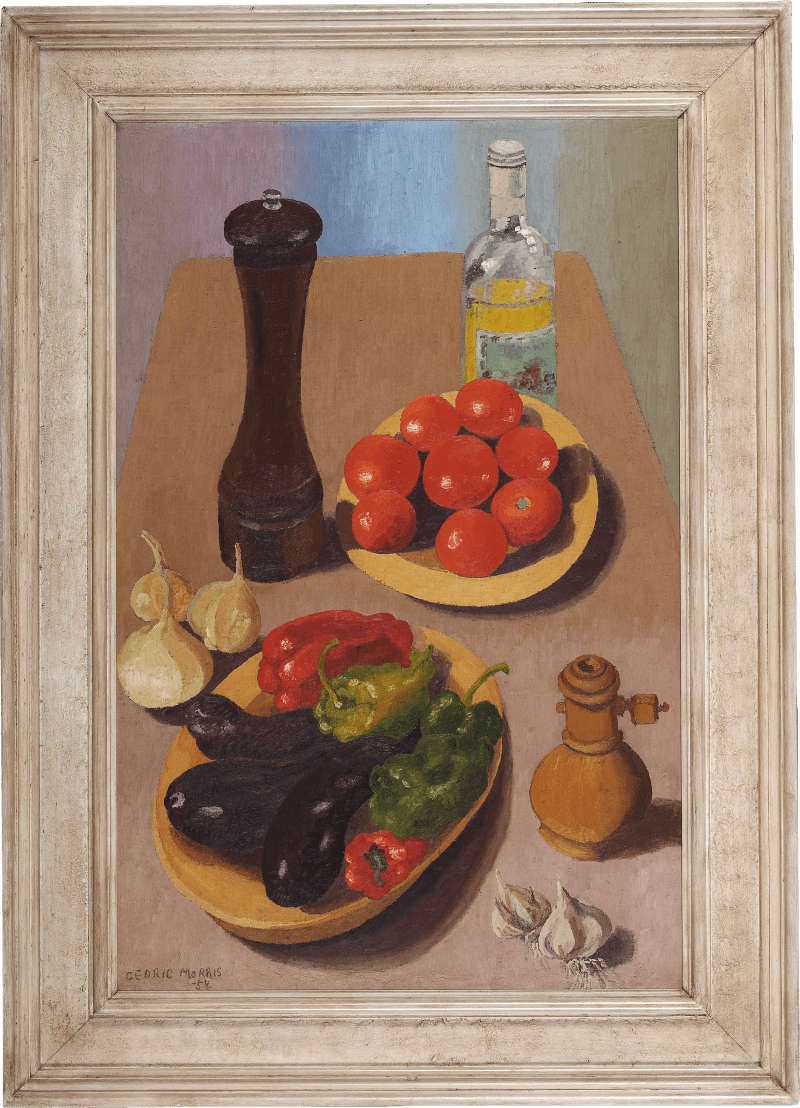This vivid still-life was painted by Cedric Morris in 1944 when he was living at Benton End and is a superb example of his wartime still-life painting. During the 1940s, the darker, more moody colours favoured by Morris in the preceding decade gave way to a brighter palette which included light pinks and blues. He was also increasingly experimental with backdrops and would often, as seen here, place his floral subjects in interior settings.
Until recently, this painting formed part of the collection of horticulturist Beth Chatto and her husband Andrew, who became part of the close group that congregated at Benton End. That such a prominent gardener collected Morris’ works is a testament to his status as a cultivator, garden creative, and painter. Rightly called an ‘Artist Plantsmen’, Morris’ understanding of colour combined with his deep knowledge of flowers has earned him a reputation as one of the most accomplished flower painters of the twentieth century. Of her...
This vivid still-life was painted by Cedric Morris in 1944 when he was living at Benton End and is a superb example of his wartime still-life painting. During the 1940s, the darker, more moody colours favoured by Morris in the preceding decade gave way to a brighter palette which included light pinks and blues. He was also increasingly experimental with backdrops and would often, as seen here, place his floral subjects in interior settings.
Until recently, this painting formed part of the collection of horticulturist Beth Chatto and her husband Andrew, who became part of the close group that congregated at Benton End. That such a prominent gardener collected Morris’ works is a testament to his status as a cultivator, garden creative, and painter. Rightly called an ‘Artist Plantsmen’, Morris’ understanding of colour combined with his deep knowledge of flowers has earned him a reputation as one of the most accomplished flower painters of the twentieth century. Of her visits to Benton End, Chatto recalled;
I spent many hours with Cedric in the garden, savouring the plants, where his knowledge and experience flowed as naturally as breathing. I taught myself to propagate from the precious screws of paper full of seed, berries, or cuttings Cedric gave me, as well as from his generous earthy bundles of roots, tubers, and bulbs.[1]
In the present work, Morris’ brushstrokes are executed with great knowledge and intuition. In bold strokes, Morris depicts winding clematis and hollyhock (Alcea) adjacent to a vase of bushy Kniphofia. In many of his still life works, Morris distorts perspective to great effect. Carefully positioned on a table, Morris here experiments with interior and exterior scenes; behind the arranged flowers, a view of a fenced garden is presented and beyond that, the form of a tree is suggested through impressionistic daubs of paint. Painted during the second world war, a time of restrictive travel and heightened anxiety for many artists, the relationship between interior and exterior, man-made and natural environments would undoubtedly have crossed Morris’ mind. Here such reflections are expressed subtly and thoughtfully, through the careful juxtaposition of the cultivated, cut, and arranged flowers held within the geometrical confines of the home, with the distant trees behind the boundaries of the fenced garden.
[1] Chatto, B. (2001) ‘A sage in Suffolk’, The Guardian. 15 September [online]. Available at: https://www.theguardian.com/th... (Accessed: 08/01/2020).













